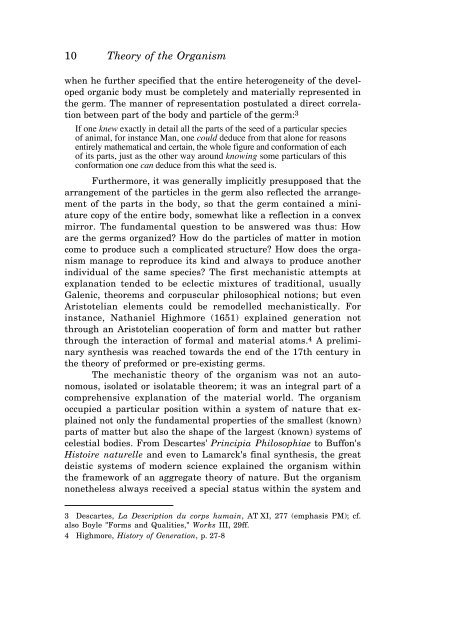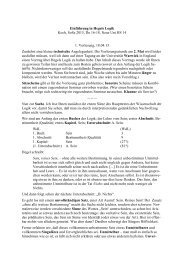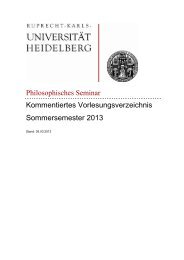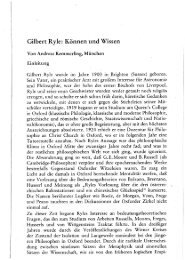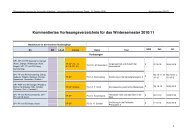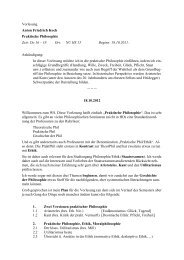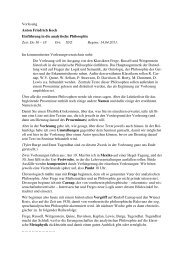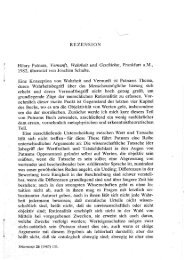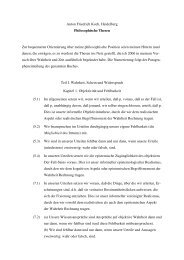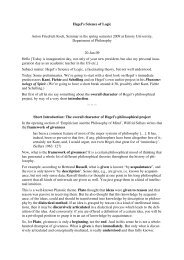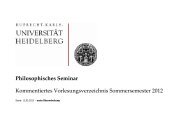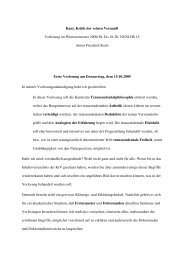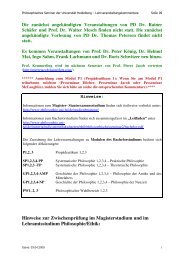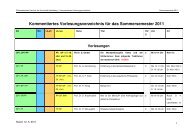KANT'S CRITIQUE OF TELEOLOGY IN BIOLOGICAL EXPLANATION
KANT'S CRITIQUE OF TELEOLOGY IN BIOLOGICAL EXPLANATION
KANT'S CRITIQUE OF TELEOLOGY IN BIOLOGICAL EXPLANATION
Create successful ePaper yourself
Turn your PDF publications into a flip-book with our unique Google optimized e-Paper software.
10 Theory of the Organism<br />
when he further specified that the entire heterogeneity of the developed<br />
organic body must be completely and materially represented in<br />
the germ. The manner of representation postulated a direct correlation<br />
between part of the body and particle of the germ: 3<br />
If one knew exactly in detail all the parts of the seed of a particular species<br />
of animal, for instance Man, one could deduce from that alone for reasons<br />
entirely mathematical and certain, the whole figure and conformation of each<br />
of its parts, just as the other way around knowing some particulars of this<br />
conformation one can deduce from this what the seed is.<br />
Furthermore, it was generally implicitly presupposed that the<br />
arrangement of the particles in the germ also reflected the arrangement<br />
of the parts in the body, so that the germ contained a miniature<br />
copy of the entire body, somewhat like a reflection in a convex<br />
mirror. The fundamental question to be answered was thus: How<br />
are the germs organized? How do the particles of matter in motion<br />
come to produce such a complicated structure? How does the organism<br />
manage to reproduce its kind and always to produce another<br />
individual of the same species? The first mechanistic attempts at<br />
explanation tended to be eclectic mixtures of traditional, usually<br />
Galenic, theorems and corpuscular philosophical notions; but even<br />
Aristotelian elements could be remodelled mechanistically. For<br />
instance, Nathaniel Highmore (1651) explained generation not<br />
through an Aristotelian cooperation of form and matter but rather<br />
through the interaction of formal and material atoms. 4 A preliminary<br />
synthesis was reached towards the end of the 17th century in<br />
the theory of preformed or pre-existing germs.<br />
The mechanistic theory of the organism was not an autonomous,<br />
isolated or isolatable theorem; it was an integral part of a<br />
comprehensive explanation of the material world. The organism<br />
occupied a particular position within a system of nature that explained<br />
not only the fundamental properties of the smallest (known)<br />
parts of matter but also the shape of the largest (known) systems of<br />
celestial bodies. From Descartes' Principia Philosophiae to Buffon's<br />
Histoire naturelle and even to Lamarck's final synthesis, the great<br />
deistic systems of modern science explained the organism within<br />
the framework of an aggregate theory of nature. But the organism<br />
nonetheless always received a special status within the system and<br />
3 Descartes, La Description du corps humain, AT XI, 277 (emphasis PM); cf.<br />
also Boyle "Forms and Qualities," Works III, 29ff.<br />
4 Highmore, History of Generation, p. 27-8


